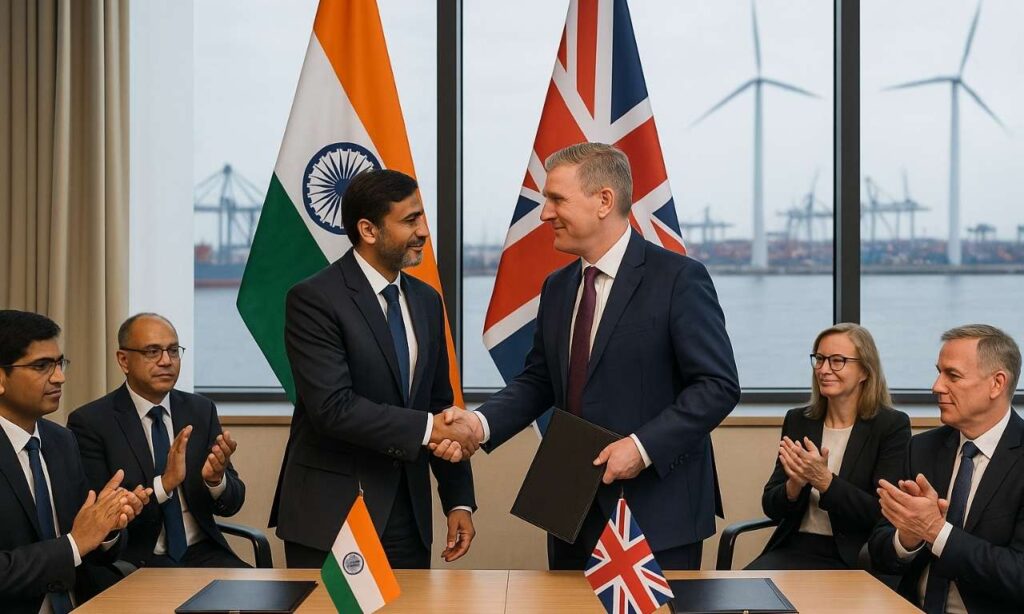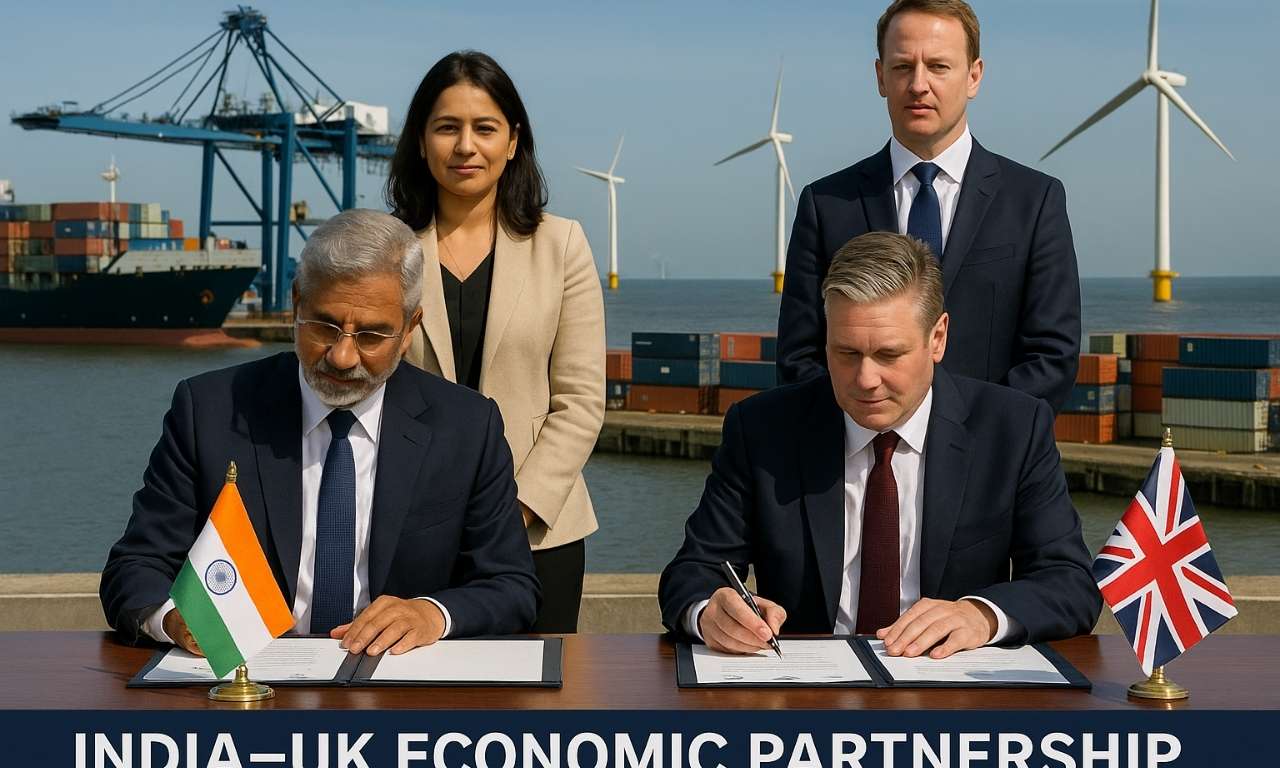The recent visit of U.K. Prime Minister Keir Starmer to India, along with the signing of the Comprehensive Economic and Trade Agreement (CETA) in July 2025, has given new momentum to India–U.K. relations.
Background
- India and the U.K. have long-standing ties in trade, education, and technology.
- In recent years, both countries have aimed to build a modern, strategic, and economic partnership focused on investment, innovation, and defence.
- The CETA now serves as a foundation for a next-generation partnership between the two economies.

Highlights of the Comprehensive Economic and Trade Agreement (CETA)
- Expanding Trade: CETA is expected to double bilateral trade by 2030. Lower tariffs on exports like textiles, agricultural goods, and pharmaceuticals.
- Ease of Mobility: Exempts Indian professionals working in the U.K. from dual social security contributions for up to three years.
- Investment Growth: The U.K. is India’s 6th largest investor, contributing nearly 5% of total FDI. A proposed Bilateral Investment Treaty (BIT) aims to enhance U.K. investments in Indian manufacturing, services, and technology sectors.
- Encourages British firms to use India as a global manufacturing and export hub while Indian companies gain technological and market access in Europe.
Beyond Trade: Strategic Cooperation
- Vision 2035 Roadmap: Aims for deeper cooperation in defence, climate change, education, mobility, and technology.
- Technology Security Initiative (TSI) – 2024: Encourages collaboration in critical technologies such as AI, quantum computing, semiconductors, and critical minerals.
Global and Strategic Context
- The visit comes amid a fragmented global economy and the rise of regional trading blocs.
- CETA enables both countries to enhance supply chain resilience and adapt to global realignments.
- For Britain, India offers a growing market, digital innovation, and green finance opportunities.
- For India, the U.K. brings advanced technology, investment, and defence cooperation.
Way Forward
- Build a next-generation partnership based on:
- Trade liberalisation with sustainability goals.
- Tariff reductions with skilled mobility frameworks.
- Defence cooperation with innovation in critical technology.
- Policymakers should ensure effective implementation of CETA through reduced trade barriers, harmonised regulations, and wider industry participation.
- Priority sectors: Renewable energy, electric mobility, digital finance, aerospace, and higher education.
Conclusion
The India–U.K. partnership is evolving into a strategic and technology-driven alliance. By reinforcing CETA and Vision 2035, both nations can shape a resilient, inclusive, and innovation-led global economic order, positioning themselves as key partners in growth and global stability.
This topic is available in detail on our main website.





